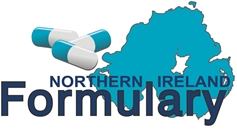2.3.2 Drugs for arrhythmias
Apart from beta-blockers, other anti-arrhythmics should only be initiated on specialist advice.
Prescribing Notes
- Anti-arrhythmics are complex agents; intravenous injections or infusions should be given according to specialist advice.
- The management of a cardiac arrhythmia requires a precise diagnosis and electrocardiographic evidence is essential.
- Amiodarone has many potentially serious side-effects and is reserved for treatment of life-threatening arrhythmias or when other drugs are contra-indicated or ineffective.
- Amiodarone may cause corneal microdeposits, thyroid dysfunction, pneumonitis, peripheral neuropathy and hepatotoxicity. Refer to MHRA or shared care guideline for further information, including monitoring requirements and drug interactions.
- Patients receiving amiodarone should avoid exposure of the skin to direct sunlight or sun lamps; a sunscreening product providing a minimum of SPF 30 should be applied if amiodarone is prescribed (see BNF )
- Amiodarone has a very long half-life and interacts with many drugs. There is a potential for drug interactions to occur for several weeks (or even months) after treatment with it has been stopped.
- Dronedarone (Multaq®) has been approved by NICE (NICE TA197 August 2010) for the prevention of recurrence of AF in patients in whom conventional first-line anti-arrhythmic drugs are ineffective, contra-indicated or not tolerated but if ineffective, should be stopped. Dronedarone should not be used in permanent AF. Treatment should be initiated on specialist advice only. A shared care guideline for this drug is available.
- Flecainide has a negative inotropic effect and can increase the electrical threshold in patients with pacemakers. It should be avoided after myocardial infarction.
- Propafenone is contraindicated in patients with significant structural heart disease or in patients with an incident of myocardial infarction within the last 3 months.
- Sotalol is a non-selective beta-blocker with additional Class III anti-arrhythmic properties. Sotalol may cause polymorphic VT (torsades de pointes); it should be given with extreme caution with drugs known to prolong the QT interval, e.g. erythromycin, clarithromycin, chloroquine, haloperidol, lithium, tricyclic antidepressants, chlorpromazine. Sotalol should be used with caution in patients on diuretics and avoided in hypokalaemia. It is normally reserved for use in paroxysmal atrial fibrillation. For further information on drugs that can prolong the QT interval – see www.crediblemeds.org.
- The negative inotropic effects of anti-arrhythmic drugs tend to be additive. Therefore, special care is needed if two or more are used, especially in impaired myocardial function.
- Verapamil may be used in paroxysmal supraventricular tachycardia. It is also used to slow the ventricular rate in atrial fibrillation. However, it should be avoided in atrial fibrillation or flutter complicating Wolff-Parkinson-White syndrome where it may promote antero-grade conduction, which can potentially lead to ventricular fibrillation. It should be avoided in patients with impaired left ventricular function. There is a risk of potentially serious bradycardia if co-administered with beta-blockers or digoxin.
